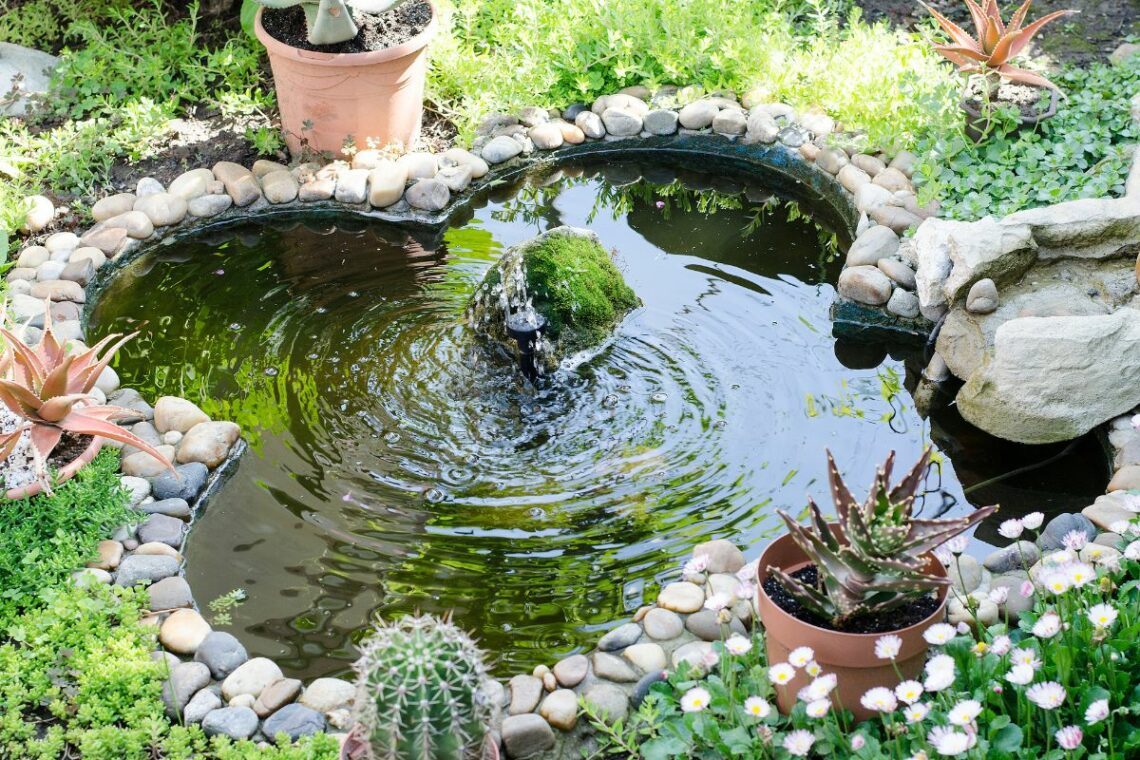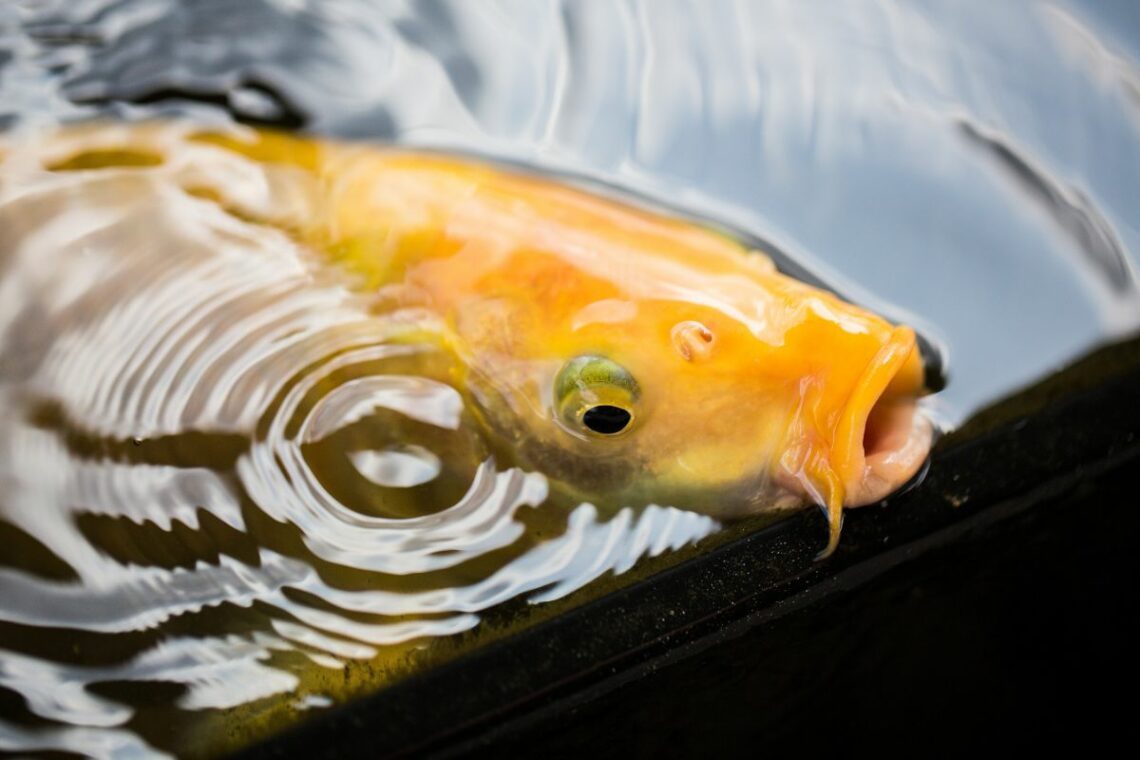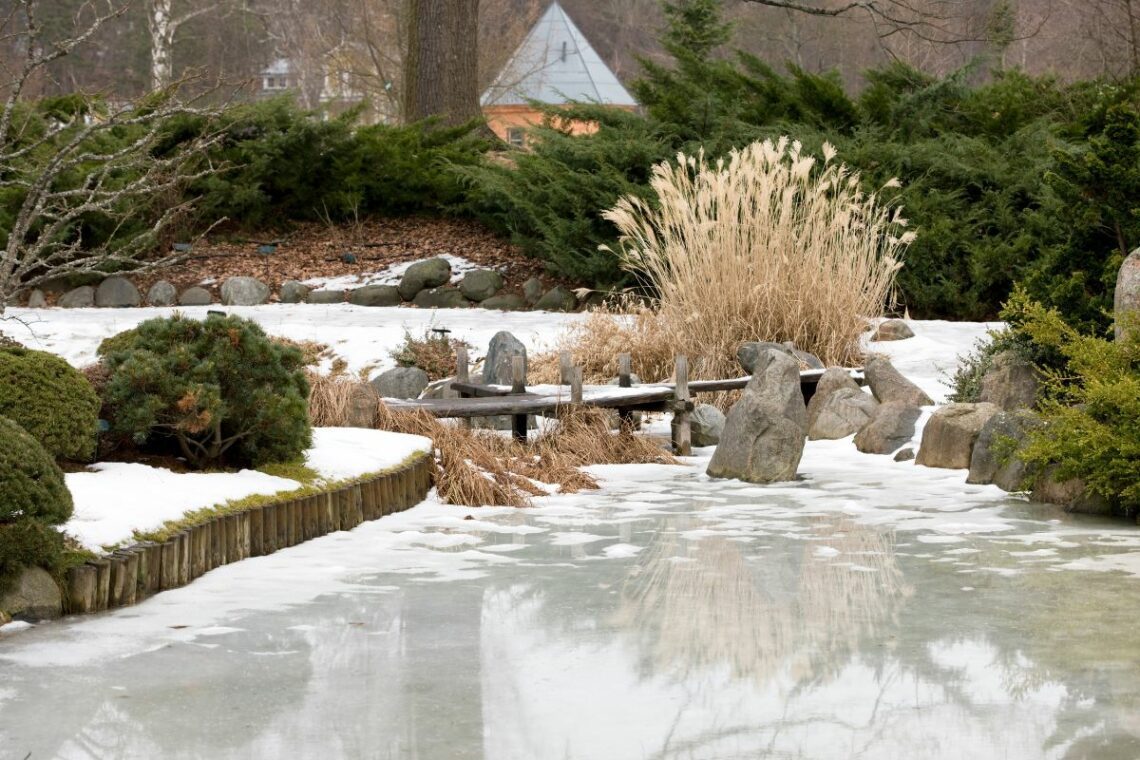As winter arrives and temperatures start to drop, many pond owners begin to worry about what a frozen pond means and what actually happens when your pond freezes over. The crispy leaves beneath your feet, snowfall and ice, and that breath of fresh air when you first step outside. It’s a bit like marmite – you either love it or you hate it. We may enjoy autumn and winter, but I can tell you now, fish don’t.
When temperatures hit zero, it’s completely normal for a garden pond to become frozen on top. You may start to panic, but keep cool. In this guide, we’ll walk through what’s actually going on beneath the pond ice and how to keep a small area ice free so gases can escape and your fish stay safe.
What Actually Happens When Your Pond Freezes Over
When your pond freezes over, the cold water sits at the top and the slightly warmer pond water sinks to the bottom. Your pond fish move into this deeper layer and slow down to save energy. The frozen pond surface acts like a lid, and pond ice traps gases from decaying leaves and other organic matter, and stops fresh oxygen entering the water.
Left unchecked, this build-up of gases (including ammonia) can put your fish and wildlife at risk. The good news? As long as you keep a small area of pond ice free, your pond can stay healthy right through the colder months.
4 Essential Winter Pond Care Tips
These tips will help you keep your fish safe and well. For more information on maintaining a healthy swim pond in winter, check out our Pond Winterisation Guide.
1. Check Underwater Pumps

To ensure the wellbeing of your fish throughout the winter, it’s crucial to verify that all underwater pumps are positioned well below the frozen surface of your pond. This preventative measure is vital not only for maintaining the functionality of the pump but also for guaranteeing a continuous oxygen supply to your fish.
Proper placement helps prevent the pumps from freezing and ensures that they can continue to circulate warmer water from deeper layers, which is essential for the survival of aquatic life during cold spells. By maintaining a steady flow of oxygenated water, you’ll create a more stable environment for your fish to thrive in, even when the surface is frozen.
2. Safely Create a Breathing Hole

To allow for proper gas exchange and prevent the buildup of toxic compounds, it’s crucial to keep a hole open in the ice. However, breaking the ice can stress your fish, so opt for a gentler approach:
- Carefully pour warm water onto the ice on the pond surface to melt a small hole.
- Avoid using boiling water, as the sudden temperature change can shock your fish.
- Check the hole frequently to ensure it hasn’t refrozen, and repeat the process if necessary.
By maintaining an open area in the ice, you’ll ensure that your fish have access to the oxygen they need to survive and that harmful gases can escape, promoting a healthier underwater environment.
3. Remove Snow from the Pond’s Top Ice Surface

If snow accumulates on the frozen pond surface, take the time to clear it away. This will allow essential light to penetrate the water, enabling pond plants to continue producing oxygen and maintaining a healthy ecosystem for your fish.
Photosynthesis is a vital process that helps keep your pond’s oxygen levels stable, even during the colder months. By removing the snow cover, you’ll ensure that your pond’s aquatic plants can continue to play their crucial role in maintaining water quality and supporting the overall health of your pond’s ecosystem.
4. Keep Equipment Running (i.e. Pumps And Filters)

Your pond’s filter is home to beneficial bacteria that break down toxic compounds, maintaining optimal water quality and promoting the health of your pond fish. While these bacteria may become dormant in colder temperatures, a constant supply of oxygenated water from the pump will keep them alive until spring arrives. Avoid shutting down your pump and filter completely during the winter months, as this will disrupt the crucial filtration process.
By keeping your pump running, you’ll also prevent the water in the pipes from freezing. Your equipment will be safe from potential ice expansion damage thanks to the constant flow of water. This will not only help keep your fish healthy throughout the winter but also ensure that your pond is ready to thrive come spring.
So, make sure to leave your pump running!
Follow these rules this winter, and you’ll have healthy, happy fish!
Wrap Up & Key Takeaways
By following these essential winter pond care tips, you can ensure that your fish remain healthy and happy throughout the coldest months. Regular maintenance and attention to detail are key to maintaining a thriving ecosystem in your pond, even when the surface is frozen. Remember, a well-cared-for pond provides joy and tranquility all year round, and the effort you put in during the winter will pay off in the spring and summer months. And if you’d rather have experts keep things running smoothly, the team at Ponds by Michael Wheat is here to help you look after, or even redesign, your pond for the seasons ahead.
Frequently Asked Questions
Will my fish be okay if the pond is completely frozen on top?
If your pond is deep enough and the water quality is good, your pond fish are usually fine under a sheet of pond ice. The real issue is gas build-up, so always aim to keep at least one small area ice free to let oxygen in and waste gases out.
Should I turn my pond pump and filter off in winter?
In most cases, it’s better to keep your pond pump and filter running so oxygen continues to move through the pond water and beneficial bacteria can survive. Just make sure any submersible pump is set deeper in the pond rather than right on the bottom.
Do I need a pond heater or de-icer?
You don’t have to use a pond heater or de-icer, but they make life much easier if your pond freezes quickly or you keep a lot of valuable fish. A small, low-watt unit is enough to keep one breathing hole open and reduce the risk of gas build-up.
What about wildlife ponds – should I treat them differently?
Wildlife ponds are generally low-stocked, so they cope better when frozen over, but trapped gases can still be a problem. Avoid chemicals or smashing the ice; instead, clear debris in autumn and keep a small hole open in the ice so frogs, newts and other wildlife can benefit from good gas exchange too. Check out How to Clean a Wildlife Pond for additional tips.
We’d love to hear from you.
Are you an experienced pond enthusiast with your own winter care tips to share? We’d love to hear from you! Leave a comment below and share your knowledge with our community.
Don’t forget to share this article with your fellow pond owners to help them keep their fish safe and healthy this winter.
And if you’re looking for more in-depth guidance on pond maintenance and fish care, be sure to download our comprehensive pond care guide – it’s packed with expert advice and practical tips to help you create and maintain the pond of your dreams!
Not ready for a consultation?
Grab your free swim pond inspiration guide now.
